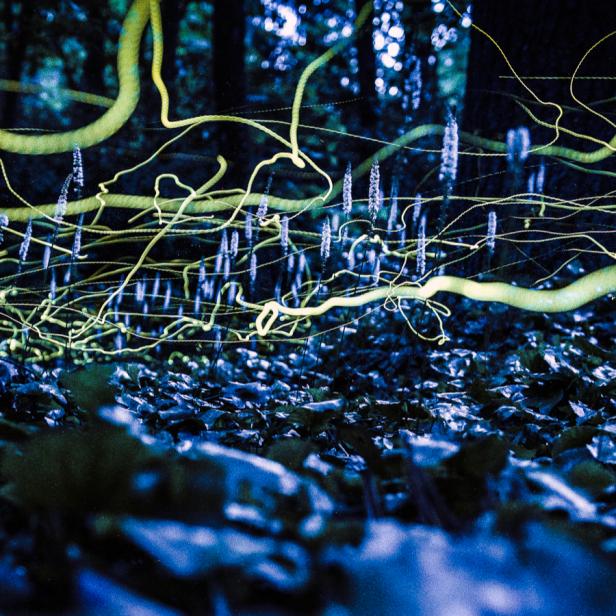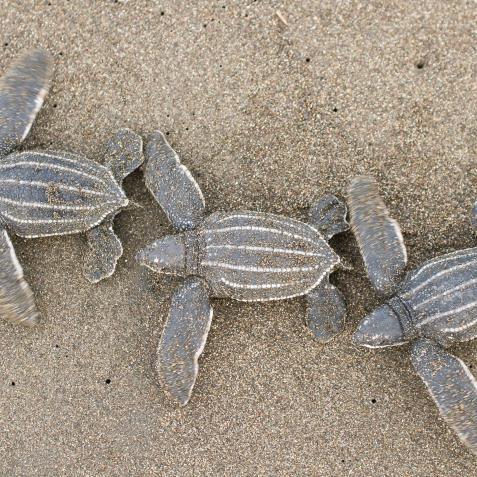
Spencer Black
Rare Blue Ghost Fireflies Only Glow in One Part of North America
These insects emit a glow a yellow-green hue.
For those who grew up around them, fireflies (aka lightning bugs) spark childhood memories of hours spent desperately trying to clasp them in our hands or stuff them in a jar. Those critters, by and large, glow a yellow-green hue. But in a few rare regions of North Carolina, as the weather starts to warm up in the Appalachian mountains, blue ghost fireflies begin to emit a color firefly lovers aren't used to seeing.

Spencer Black
This Little Light of Mine
For just two to four weeks a year, blue ghost fireflies make an appearance around Asheville, North Carolina. This rare type of firefly only glows during mating season, which begins in the late spring or early summer. That's when they show off their unique blue-white hues to attract a mate.
The color isn't the only unusual quality about these otherworldly insects. While other fireflies flash on and off like a warning light, blue ghosts glow for up to a minute at a time. The males can fly, painting streaks of bluish-white light through the forest. The females don't fly — despite reaching sexual maturity, they never change from their wingless larval form. As a result, they're left to crawl up on leaves and foliage just a short distance from the forest floor, then sit still and glow to help males find them.
Fireflies are bioluminescent, which means they produce their own light. According to researchers from Harvard Medical School, the light comes from the mixture of oxygen, a pigment called luciferin, an enzyme called luciferase, and an energy-providing chemical called adenosine triphosphate (ATP). Uric acid crystals in the light-producing cells act as the reflective layer that helps the light shine. But nobody is exactly sure why these fireflies differ so much from other subspecies.
The "blue" in their name makes sense, but what about the "ghost" part? According to Appalachian legend, the glowing blue fireflies are said to be ghosts of Confederate soldiers, as many soldiers lost their lives in the region where the fireflies appear.
How to See Them
Since these fireflies are crazy about moist forest floors, people walking the trails in the area would be likely to crush them. Plus, lights from phones and flashlights might also affect the fireflies' communication. That's why when mating season comes around, some state parks close many of their trails to preserve these unique creatures.
But don't worry: If you're dying to see them — along with the whopping 18 other firefly subspecies in the area — there are a number of ways to legally take a peek. If you do plan a visit, take a few precautions: load up your flashlight with Duracell batteries and cover the light with red or blue cellophane to retain your night vision (or just grab a red-tinted headlamp like this one). Once you reach the designated area, turn off your flashlight and take it all in.
This article first appeared on Curiosity.com.


















